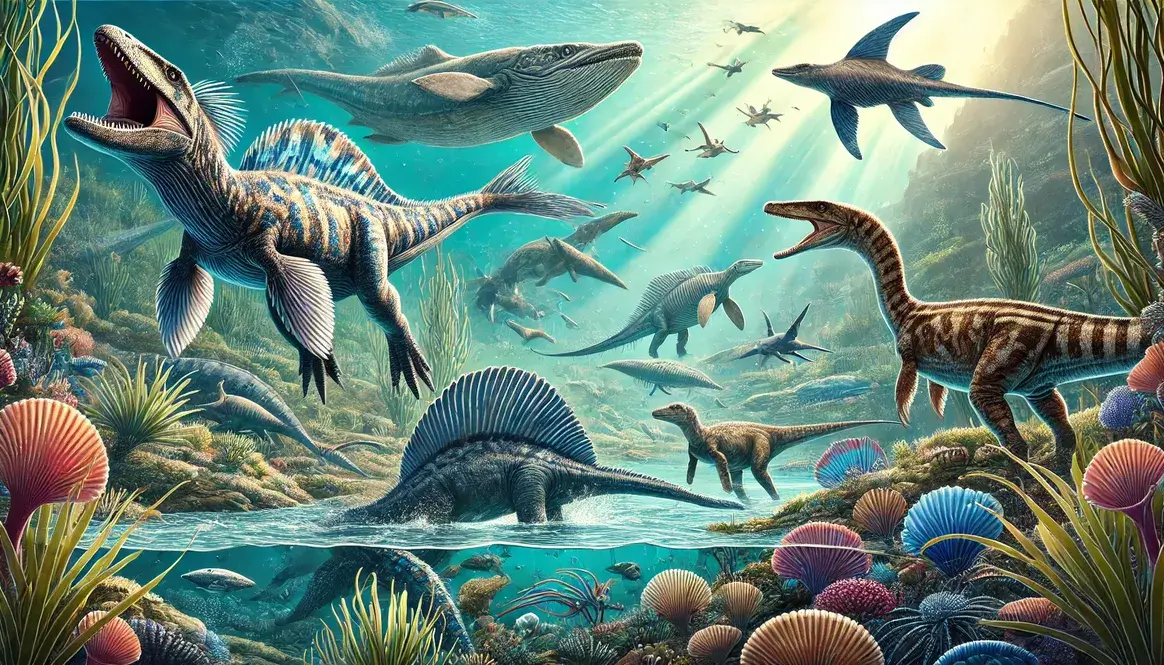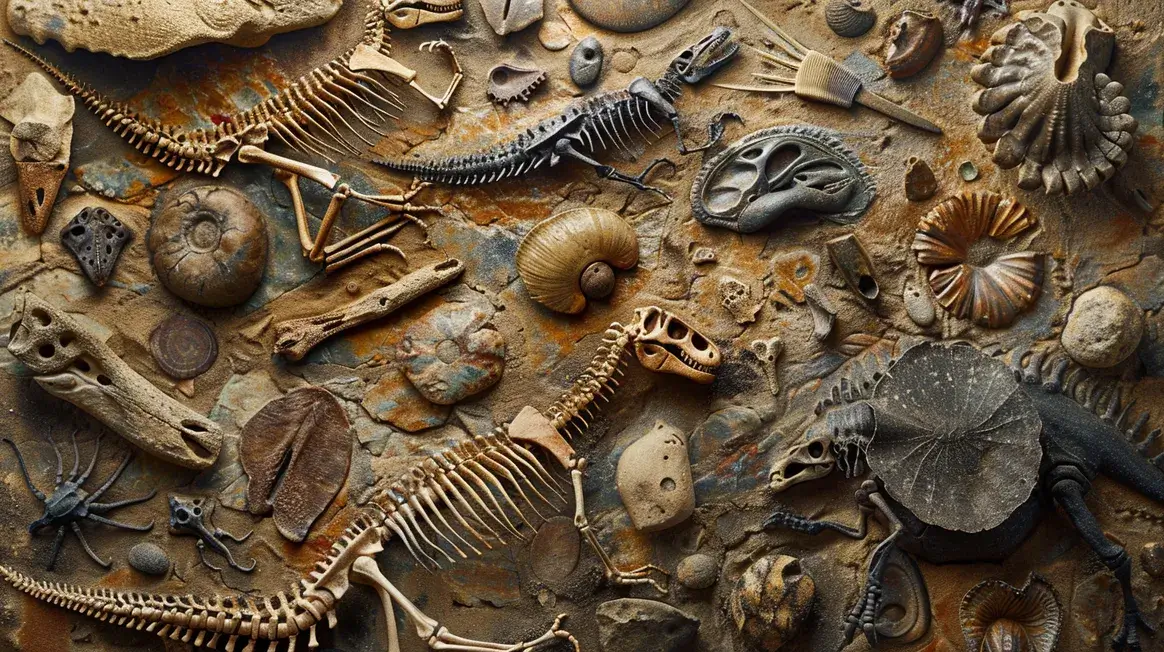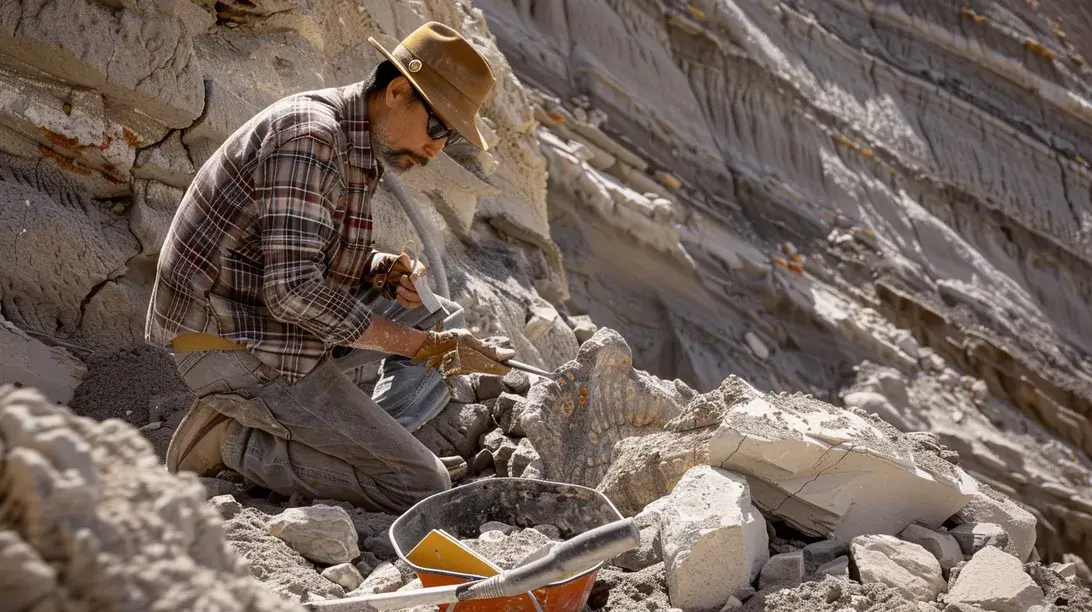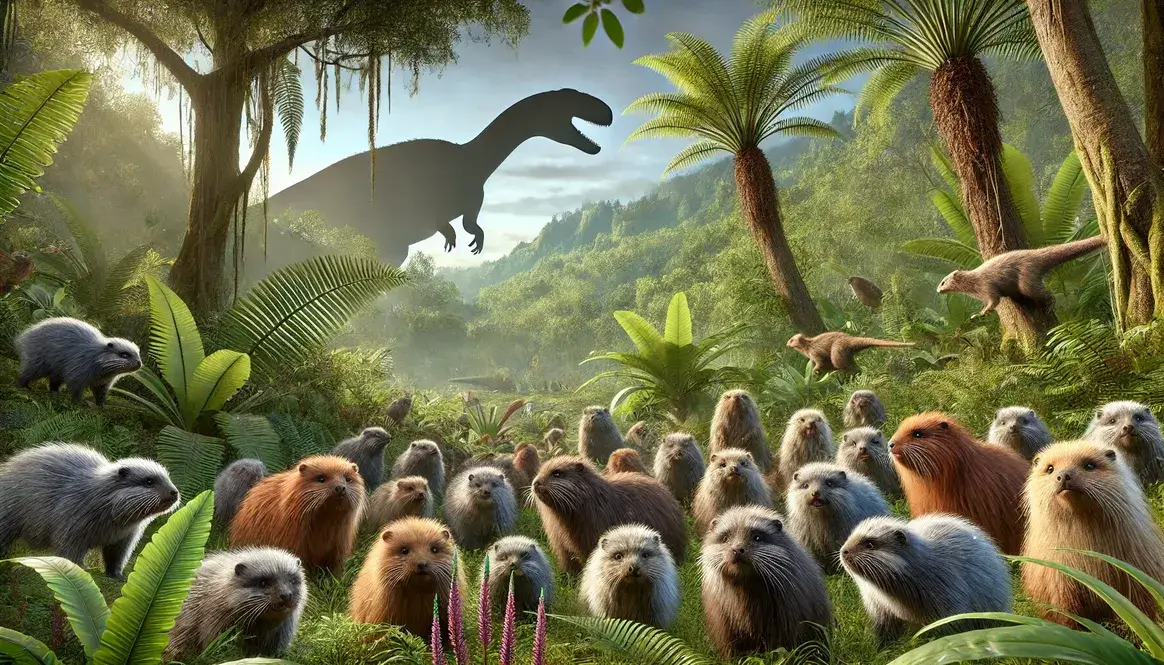The Jurassic seas were home to some of the most impressive creatures to ever swim the Earth’s oceans. These ancient marine reptiles, often called Jurassic sea monsters, ruled the waters for millions of years. Let’s take a deep dive into their fascinating world!
Early Jurassic: The Rise of Marine Reptiles
Around 201 million years ago, at the start of the Jurassic period, the oceans were recovering from a major extinction event. This opened up new opportunities for reptiles to take over the seas.
Early marine reptiles like ichthyosaurs and plesiosaurs began to appear. These creatures weren’t content to just dip their toes in the water – they went all in! Over time, they developed amazing adaptations that made them master swimmers:
- Streamlined bodies for speedy swimming
- Flippers instead of legs
- Special ways to breathe underwater
These changes helped reptiles become the top predators in Jurassic oceans.
Jurassic Sea Monsters Take Center Stage
As the Jurassic period went on, marine reptiles became more and more impressive. The main groups of these ocean-dwelling reptiles were:
- Ichthyosaurs
- Plesiosaurs
- Pliosaurs
But wait – weren’t these creatures dinosaurs? Actually, no! While they lived at the same time as dinosaurs, marine reptiles were a different group altogether. Dinosaurs were land-dwelling reptiles, while these sea monsters spent their lives in the water.
Ichthyosaurs: Fish-Shaped Predators
Ichthyosaurs were some of the first marine reptiles to hit the scene. Their name means “fish lizard,” and it’s easy to see why!
These speedy swimmers evolved from land-dwelling reptiles, but over time they became more and more fish-like. They had:
- Streamlined bodies perfect for cutting through water
- Powerful tails for propulsion
- Large eyes for spotting prey in deep or murky water
Two famous ichthyosaurs were Ophthalmosaurus and Temnodontosaurus. Ophthalmosaurus had enormous eyes – some of the largest of any animal ever! Temnodontosaurus, on the other hand, was one of the biggest ichthyosaurs, growing up to 39 feet long.
Plesiosaurs: Long-Necked Hunters
Plesiosaurs were another group of marine reptiles that really took off in the Jurassic. These guys looked pretty weird compared to other sea creatures. Imagine a turtle without a shell, with a super long neck and a tiny head!
Plesiosaurs had some unique features:
- Long, flexible necks (some had over 70 neck vertebrae!)
- Small heads with sharp teeth
- Four large, paddle-like flippers
Famous plesiosaurs include Cryptoclidus and Rhomaleosaurus. Cryptoclidus was about 26 feet long and probably ate fish and squid. Rhomaleosaurus, on the other hand, was an early plesiosaur that could grow up to 23 feet long.
Pliosaurs: Short-Necked Terrors
Pliosaurs were like the T. rex of the seas – big, scary predators with powerful jaws. They actually evolved from plesiosaurs, but took a different path:
- Short necks (the opposite of their plesiosaur cousins)
- Huge heads with strong jaw muscles
- Large, sharp teeth perfect for crushing prey
Two well-known pliosaurs were Liopleurodon and Pliosaurus. Liopleurodon could grow up to 21 feet long and had teeth nearly a foot in length! Pliosaurus, which gave its name to the whole group, could reach lengths of up to 39 feet.
Middle Jurassic: Diversification and Specialization
As the Jurassic period continued, marine reptiles became even more diverse. Different groups started to specialize in various hunting techniques and prey types.
For example, some ichthyosaurs developed larger eyes to hunt in deeper waters, while others became faster to chase quick-moving prey. Plesiosaurs and pliosaurs also diversified, with some focusing on fish, others on hard-shelled creatures, and some becoming top predators that could even take on other marine reptiles!
These changes were partly driven by shifts in the marine ecosystems. New types of prey animals appeared, and the breakup of the supercontinent Pangaea created new ocean habitats. All of this gave Jurassic sea monsters plenty of opportunities to evolve and thrive.
| Marine Reptile Group | Specialization Example |
|---|---|
| Ichthyosaurs | Deep-sea hunting with large eyes |
| Plesiosaurs | Fish-catching with long, flexible necks |
| Pliosaurs | Apex predators with powerful jaws |
As we move into the Late Jurassic, we’ll see how these marine reptiles reached their peak and became true rulers of the ancient oceans!
Late Jurassic: Peak of Marine Reptile Dominance
The Late Jurassic, about 163 to 145 million years ago, was the golden age of marine reptiles. Jurassic sea monsters reached their peak in both diversity and abundance during this time. The oceans were teeming with life, creating complex ecosystems where various marine reptiles filled different niches.
Imagine an underwater world where massive pliosaurs hunted long-necked plesiosaurs, while speedy ichthyosaurs darted through schools of fish. It was like an underwater version of the fierce competition happening on land between Jurassic predators like Allosaurus!
This diversity meant that different marine reptile groups were often competing for the same resources. Some became specialized hunters, focusing on specific prey, while others became generalists, able to eat a variety of ocean dwellers.
Famous Jurassic Marine Reptile Fossils
We know so much about Jurassic sea monsters thanks to some amazing fossil discoveries. These ancient remains give us a window into the past, showing us what these creatures looked like and how they lived.
Some of the most well-preserved specimens come from special places where conditions were just right for fossilization. Let’s look at two of these incredible fossil sites:
The Solnhofen Limestone: A Jurassic Time Capsule
The Solnhofen Limestone in Germany is like a time capsule from the Late Jurassic. This site is famous for its exceptionally well-preserved fossils, including the first Archaeopteryx specimen, a crucial link between dinosaurs and birds.
But it’s not just flying creatures – Solnhofen has also yielded some amazing marine reptile fossils:
- Small, well-preserved ichthyosaurs
- Detailed imprints of soft tissues, giving us clues about skin texture and body shape
- Fossils of prey animals, helping us understand marine food chains
The Oxford Clay Formation: Treasure Trove of Sea Monsters
The Oxford Clay Formation in England is another rich source of Jurassic marine reptile fossils. This site has given us some of the most complete and diverse collections of marine reptiles from the Middle to Late Jurassic.
Key discoveries from the Oxford Clay include:
- Nearly complete pliosaur skeletons
- Various plesiosaur species, showing the diversity of long-necked marine reptiles
- Well-preserved ichthyosaur remains, including pregnant females with embryos
These fossils have been crucial in helping scientists piece together the story of Jurassic sea monsters.
Unique Adaptations to Marine Life
Jurassic marine reptiles developed some incredible adaptations for life in the water. Many of these adaptations are examples of convergent evolution – where unrelated groups evolve similar features to solve the same problems.
Here’s a table showing some of these adaptations and how they compare to modern marine animals:
| Adaptation | Jurassic Sea Monster | Modern Equivalent |
|---|---|---|
| Streamlined body | Ichthyosaurs | Dolphins |
| Powerful tail flukes | Ichthyosaurs | Sharks |
| Flippers | Plesiosaurs | Sea turtles |
| Large eyes | Some ichthyosaurs | Deep-sea fish |
These marine reptiles also had unique ways of swimming, feeding, and reproducing:
- Plesiosaurs may have used all four flippers to “fly” through the water
- Pliosaurs had strong jaw muscles for crushing tough prey
- Many gave birth to live young instead of laying eggs, an adaptation still seen in some modern marine reptiles
These adaptations were quite different from their land-dwelling ancestors, showing just how much these reptiles changed to dominate the seas.
Legacy of Jurassic Sea Monsters
The reign of Jurassic sea monsters had a huge impact on marine ecosystems. They were top predators, shaping the evolution of their prey and influencing the entire ocean food web.
As the Jurassic came to an end, these marine reptiles set the stage for life in the Cretaceous seas. While some groups would decline, others would continue to thrive and evolve. The transition from the Jurassic to the Cretaceous saw changes both on land and in the sea, with new groups rising to prominence.
Studying Jurassic sea monsters helps us understand the evolution of marine reptiles and the ancient climates they lived in. Their fossils provide valuable information about how animals adapt to major environmental changes – something that’s still relevant in our changing world today.
These ancient ocean predators may be long gone, but their legacy lives on in the marine life we see today. From the streamlined bodies of dolphins to the long necks of sea snakes, echoes of Jurassic sea monsters can still be found in our modern oceans.









